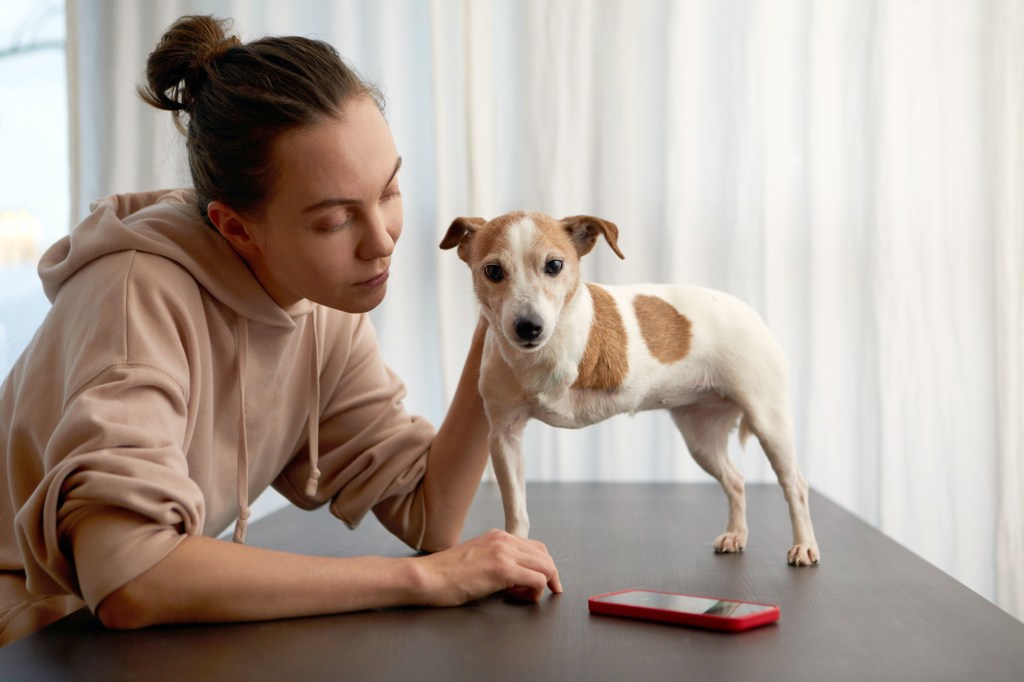It’s not uncommon for dogs to face an injury or illness that results in amputation. Whether it’s due to cancer, an accident, or other reasons, it can be a challenging adjustment for both the pet and the owner. However, having three legs does not mean a pup cannot live a happy and fulfilling life as a tripod dog. With a little extra care, love, and patience, you can help your furry friend remain healthy and active.
Caring for a “tripawd” — a term affectionately used by dog lovers — requires a slightly different approach to caring for a canine with all four legs. It’s important to note that dogs are incredibly adaptable animals. With some minor adjustments, they can still run, jump, and play just as well as their four-legged friends. Below are practical tips and guidelines on how to care for your three-legged dog and ensure that they lead their best life.
If your dog requires an amputation, here’s what to do

The thought of having to amputate a limb from your furry best friend can bring on a wave of difficult emotions. The truth is, veterinarians only suggest this procedure if it’s the best course of action for your dog’s health and well-being. Your vet will examine your pet thoroughly and provide a personalized recommendation based on their current condition, their ability to function, and the chances of recovery.
Although hearing the news of a possible amputation may come as a surprise, it’s important to gather all the necessary information. Prepare a list of questions to ask your vet to understand your dog’s condition or disability better. This will give you a sense of how serious the situation is and what to expect during both the surgery and recovery process.
The key to providing the best care for your beloved pooch is being informed and understanding their individual needs. With this knowledge, you can confidently make decisions and support them every step of the way.
Providing proper post-amputation care for your three-legged dog
The initial phase following amputation can be a tough one for both your dog and you. Nevertheless, with the proper attention and care, things can get back to normal in no time.
Your veterinarian is your best source of guidance during this time. It is crucial to follow their advice closely, including administering any prescribed pain medications and antibiotics. Even if your pup seems to be doing well, do not discontinue their painkillers without first consulting with your vet. Similarly, it’s important to complete the full course of antibiotics, as stopping early can be dangerous.
To ensure your dog is comfortable during their recovery period, provide them with soft surfaces to relax on, such as cozy rugs or carpets. Since walking on wood can be challenging at first, keep your pooch in a carpeted space. If this isn’t possible, add some rugs for traction.
Your pup may also need help getting around during the initial recovery phase, so make sure to ask your vet for guidance on the correct way to handle them. This will help prevent any further discomfort or stress. Additionally, your vet can provide instructions on when it’s safe to reintroduce some forms of activity.
While the idea of limb amputation may seem daunting, rest assured that the surgery is a safe procedure. Remarkably, unlike humans, dogs adjust to their three-legged lives with surprising ease, bouncing back to their energetic selves in no time post-surgery.
Adopting a tripod dog

Another common situation that requires caring for a three-legged dog is adoption. Whether they’ve been through an amputation or were born with a congenital condition, this pooch has already adapted to life with one less leg.
Adopting a canine is an important decision that calls for ample consideration and dedication. If you’re considering adopting a three-legged pup from a shelter, the clinic’s staff will provide you with all the information concerning their activities, habits, and any specialized care that may be necessary.
Welcoming an adopted three-legged canine to the family
If you decide to welcome a three-legged canine into your family, be sure to allow ample time for the pooch to adjust to their new environment. Chances are, they were comfortable and familiar with their previous living situation. As you integrate them into their new home, be patient as they learn to adapt to new spaces and situations.
For instance — you may find that your new pup has never climbed stairs or been able to lounge in a chair, so it’s up to you to provide training and support as they learn to navigate their new world. Don’t be discouraged if your tripod pet is initially hesitant — with your help, they’ll develop the confidence to tackle new challenges. Use positive reinforcement to encourage good behavior, and remember to maintain your composure during this transitional period. By taking the time to adjust and learn, you’ll soon find that your three-legged friend fits right into your happy home!
How to care for a three-legged dog: The basics

It’s essential to give your three-legged pup extra TLC, not just in terms of their amputation or rescue aftermath, but also in maintaining their overall health. This is a lifelong commitment that requires diligent monitoring and incorporation into your daily routine. With proper care and attention, your tripod dog will live a joyful and fulfilling life.
Ensure optimal weight management
Being in good shape is crucial for all canines to remain in a healthy condition; but for tripawds, it becomes even more vital. Since they have only three legs to bear their weight, their balance and mass distribution are already thrown off. Consequently, when they’re carrying excess pounds, their already strained joints suffer further. Plus, added weight can spark inflammation in their body which can pose a greater threat to three-legged canines. Therefore, keeping your pet at a healthy weight is important in preserving the health of their joints and allowing them to remain both mobile and comfortable throughout their life.
Enhance joint health
For dogs with three legs, maintaining joint health is paramount to keep them up and about. The beginning of canine osteoarthritis or other joint diseases can heavily impact their mobility. If you notice your pup having a hard time, it’s best to seek advice from your trusted veterinarian for the best treatment options and suggestions on preventive measures.
Provide sufficient physical activity
It’s easy to assume that three-legged pups cannot maintain an active lifestyle, but that couldn’t be further from the truth. Contrary to popular belief, they require just as much physical activity as any other dog. It’s crucial for them to sustain proper muscle tone, which helps them relieve any additional tension on their joints and other limbs. Swimming, in particular, is a great option for tripawds as it is a low-impact activity and does not place additional strain on their joints.
Bear in mind that a dog with three legs might need to take breaks more often than one with four. Therefore, always remember to include time for rest and hydration during exercise. As you spend time with your canine companion, you’ll start to pick up on cues that indicate they’re getting worn out. If your dog’s mobility is limited, consider using tripod dog accessories to make physical activity more manageable. This can be particularly useful if you have an elderly pooch who could use some extra assistance.
Look into adaptive equipment and aids for tripod dogs
There is an abundant selection of specialized modifications and equipment on the market that are tailored to enhance the lives of tripod dogs and amputees. Although a majority of three-legged canines navigate their daily routine without any setbacks, supplementary accessories could provide an additional boost in mobility and aid in navigating their surroundings with ease. Among the beneficial gear on the market are canine boots and anti-skid socks, which facilitate increased traction for your tripawd to avoid slipping and falling.
Ensuring your three-legged dog lives their best life
Caring for a three-legged dog can be a unique challenge, but it can also be a fulfilling experience that strengthens the bond between pet and owner. From providing adequate exercise and a balanced diet to managing pain and injury prevention, there are a variety of steps you can take to ensure your tripod thrives. Moreover, giving them plenty of love, attention, and a safe environment to explore and play will also greatly benefit their well-being.
By following these tips and prioritizing your dog’s unique needs, you can help your three-legged companion live a long and healthy life. Remember, while they may have lost a leg, they have not lost their spirit. And, with your help, they can still experience the joys of being a happy, active dog.









